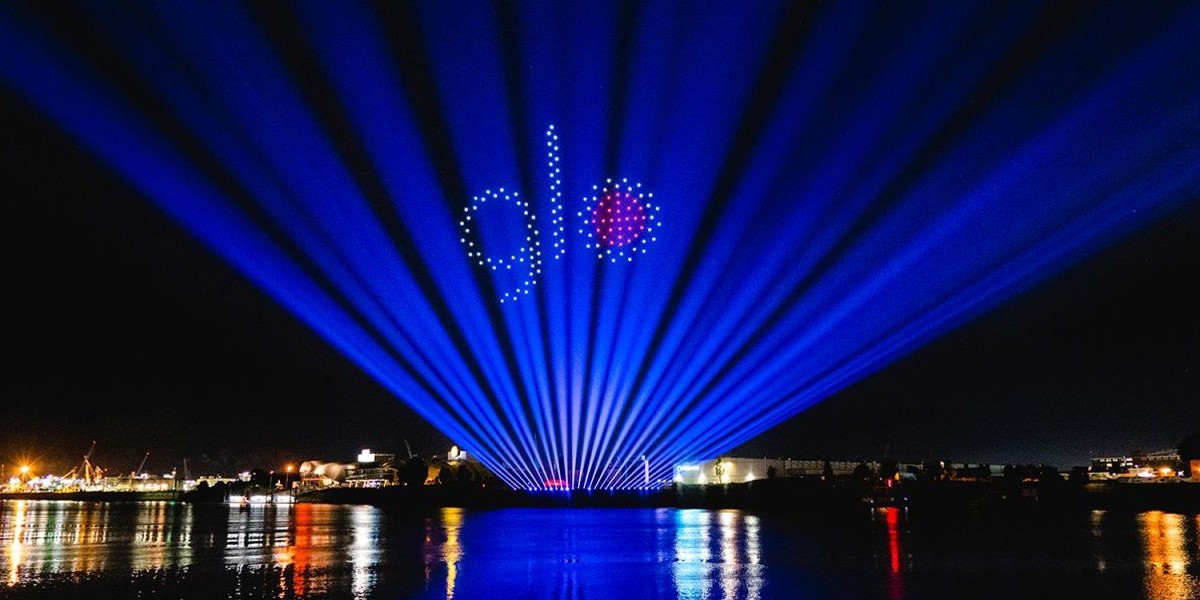In recent years, drone light shows have emerged as a breathtaking fusion of technology and art, captivating audiences with their mesmerizing displays. The United Kingdom has been at the forefront of this innovative entertainment medium, with numerous events showcasing the impressive capabilities of these aerial spectacles. The success of a drone light show hinges on meticulous planning and the expertise of specialized companies. This article delves into the intricate planning processes undertaken by a drone light show company in the UK, exploring the technological, logistical, and creative aspects that contribute to these awe-inspiring performances.
The Rise of Drone Light Shows
Drone light shows have quickly gained popularity as an alternative to traditional fireworks. Unlike fireworks, drones offer a reusable, environmentally friendly option that can be precisely controlled to create intricate patterns and animations. The versatility of drones allows for an expansive range of artistic expressions, from simple geometric shapes to complex narratives depicted in the night sky. The increasing demand for such innovative displays has led to the emergence of several specialized companies in the UK, each striving to push the boundaries of what can be achieved with drone technology.
Key Players in the UK
Several drone light show companies in the UK have garnered international acclaim for their groundbreaking performances. Among these, Celestial, Skymagic, and DroneWorks are notable for their expertise and creativity. These companies have orchestrated shows for major events, including New Year’s Eve celebrations, music festivals, and large corporate gatherings, showcasing their ability to handle projects of varying scales and complexities.
Technological Foundations
Drone Selection
The foundation of any successful drone light show lies in the selection of drones. A typical show involves hundreds, sometimes thousands, of drones, each equipped with LED lights. Companies must choose drones that are not only reliable and robust but also capable of precise maneuvering. The drones are usually custom-built to meet the specific requirements of light shows, ensuring they can sustain prolonged flights and carry the necessary lighting equipment without compromising on performance.
Software and Programming
Equally critical to the hardware is the software used to choreograph the drones’ movements. Companies employ advanced algorithms and simulation software to design and test the aerial routines. This software allows choreographers to pre-visualize the show, ensuring that the drones will move in perfect harmony. Programming the drones involves mapping out each drone’s flight path, synchronizing their movements with the lighting effects, and ensuring that they can operate safely without collision.
Creative Process
Concept Development
The creative process begins with concept development, where the theme and narrative of the show are established. This stage involves close collaboration between the client and the drone light show company to ensure that the final product aligns with the client’s vision and objectives. Whether it’s celebrating a national holiday, launching a product, or entertaining a festival crowd, the concept must be compelling and visually engaging.
Storyboarding and Design
Once the concept is finalized, the design team creates storyboards and digital mock-ups of the show. This includes designing the shapes, patterns, and animations that the drones will form in the sky. Each frame of the storyboard corresponds to a specific moment in the show, detailing the position and color of each drone. This meticulous planning is crucial for ensuring that the final display is both coherent and spectacular.
Music and Sound Integration
Sound plays a vital role in enhancing the visual impact of a drone light show. The integration of music and sound effects is carefully planned to synchronize with the drone choreography. Companies often work with composers and sound designers to create a custom soundtrack that complements the visual elements of the show. The timing of the drones’ movements and the changes in lighting are meticulously matched to the musical cues, creating a harmonious blend of sight and sound.
Logistical Challenges
Regulatory Compliance
One of the significant challenges in organizing a drone light show is navigating the regulatory landscape. In the UK, drone operations are governed by the Civil Aviation Authority (CAA), which sets stringent safety and operational standards. Companies must obtain the necessary permissions and ensure compliance with regulations concerning flight altitudes, no-fly zones, and the proximity of drones to people and property.
Safety Measures
Safety is paramount in any drone light show. Companies implement rigorous safety protocols to mitigate the risks associated with flying a large number of drones in close proximity. This includes conducting thorough pre-flight checks, maintaining communication with local air traffic control, and having contingency plans in place for adverse weather conditions or technical failures. Additionally, no-fly zones are established to keep spectators at a safe distance from the drones.
Site Selection and Preparation
Choosing the right location for a drone light show is crucial. The site must be spacious enough to accommodate the drones’ flight paths and free from obstacles such as tall buildings or trees. Companies often conduct site surveys to assess the suitability of the location and identify potential hazards. Once a site is selected, logistical preparations such as setting up launch and landing zones, installing control stations, and securing the area for spectators are undertaken.
Execution and Performance
Rehearsals
Before the final performance, multiple rehearsals are conducted to ensure that the show runs smoothly. These rehearsals allow the team to fine-tune the choreography, test the drones’ performance, and make any necessary adjustments. Rehearsals may involve partial or full-scale runs of the show, depending on the complexity and scale of the performance.
Real-Time Control
During the show, real-time control and monitoring are essential. Operators use sophisticated control systems to manage the drones’ movements and ensure synchronization with the lighting and music. These systems provide live feedback on the drones’ status, allowing operators to make real-time adjustments if necessary. The successful execution of a drone light show relies on the seamless integration of technology, creativity, and precision.
Conclusion
The intricate planning of drone light shows in the UK exemplifies the convergence of art and technology. Companies specializing in these performances undertake a meticulous process that involves selecting the right drones, designing captivating choreographies, ensuring regulatory compliance, and executing flawless performances. As drone technology continues to advance, the possibilities for creating even more spectacular and innovative shows are boundless. The dedication and expertise of drone light show companies in the UK ensure that audiences will continue to be dazzled by these mesmerizing aerial displays for years to come.








